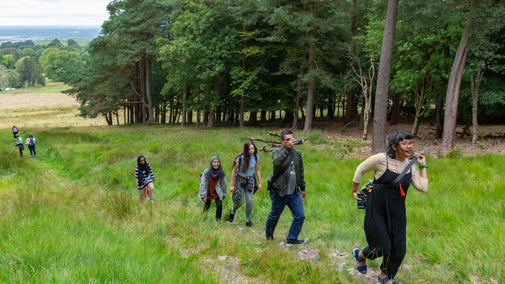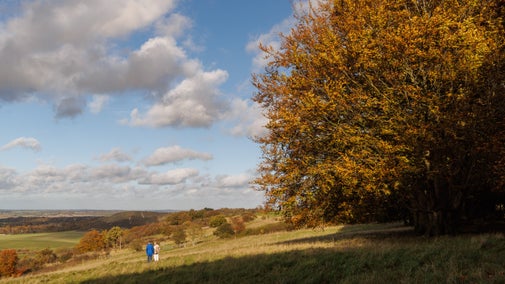Danbury Common to Lingwood Common walk
Essex, Bedfordshire & Hertfordshire
Take a bracing walk from Danbury Common to Lingwood Common along a waymarked route. Discover open heathland, wooded glades, wetlands and look out for the wildlife that thrives in this wide variety of habitats. This easy, 1.5 mile walk is ideal for families.
Start point
National Trust Armoury car park, grid ref: TL781044Trail information
Nearby walks
This is one of a series of three walks around Danbury Common, Lingwood Common and Blake's Wood. Each walk can be undertaken separately or joined with this one for one long walk.
More near here
Lingwood Common to Blakes Wood walk
A 3.5-mile circular walk, ideal for families, through mixed woodland between Blake's Wood and Lingwood Common.

Danbury Commons and Blakes Wood
Explore Essex's second largest area of common land

Blakes Wood to Lingwood Common walk
A 2.5-mile walk from Blakes Wood car park to Lingwood Common near Danbury in Essex that takes in peaceful glades in a woodland with a mix of tree species.

Get in touch
National Trust Danbury Common, The Armoury, Penny Royal Road, Danbury, Essex, CM3 4ED
Our partners

We’ve partnered with Cotswold Outdoor to help everyone make the most of their time outdoors in the places we care for.
You might also be interested in
Walking
Explore some of the finest landscapes in our care on coastal paths, accessible trails, woodland walks and everything in between. Find the best places to walk near you.

Cotswold Outdoor: our exclusive walking partner
Learn about the National Trust’s ongoing partnership with Cotswold Outdoor. Find out how they help us care for precious places and the exclusive discount available for National Trust supporters.

Staying safe at National Trust places
The special places in National Trust care sometimes come with a few risks for visitors, be it coastline or countryside. Find out how to keep safe throughout your visits.

Follow the Countryside Code
Help to look after National Trust places by observing a few simple guidelines during your visit and following the Countryside Code.

Things to see and do at Danbury Commons and Blakes Wood
With resident nightingales and adders, Danbury Commons and Blakes Wood offer a diverse wildlife environment.

Walks through colourful heathland
Enjoy the seasonal spectacle of purple heather in bloom with these walks across heathland and moorland.

Walking in Essex, Bedfordshire and Hertfordshire
From long forest wanders to a gentle amble to a famous literary hut, these are some of the best walks around Essex, Bedfordshire and Hertfordshire.

